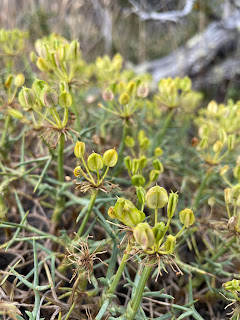As many of you know, I work in public transit, and so I like to test out the transit systems of the cities we visit. However, since Josh isn’t that excited about transit for transit’s sake, we normally only ride when it’s time competitive with other ways of getting around.
Santiago has an underground subway system, which I convinced Josh to try out. A friend from Seattle had given me a Bip! card — similar to Seattle’s ORCA card and San Francisco’s Clipper card. Based on what I saw online, the only way to pay for the Metro in Santiago these days is with a Bip! card so I was happy to arrive with one of our own.
On the first day we tried to ride, I approached the kiosk machine to see if I could buy a second card, assuming we’d each need one. Although, the machine was Spanish-only, I was able to figure out that the machine was out of cards, so we got in the long line for the single customer service agent.
My Spanish is pretty crummy, even after 6 weeks in Latin America. Once I got the agent to understand where we wanted to go, I handed over the card and she checked my balance. It was enough for our rides and she informed me I could tap twice to pay for both of us.
Pleased with my ability to get by in Spanish, we headed to the turnstile, only to get an error message when I tapped the card. Apparently, it had been deactivated, likely because it had been a while since my friend used it. The security guard couldn’t get it to work and when she tried to fix it in another machine, that machine wouldn’t work either. That’s when I learned that the train wasn’t even going where we needed to go that day. Apparently the customer service agent didn’t think to tell us that.
20 minutes after we arrived at the station, we abandoned the train and took an Uber to our brunch spot, just in time for our reservation!
The next day I convinced Josh to let me try the Metro again. This time we went to a different station, and had no wait to talk to the customer service agent. We bought two new Bip! cards and added fare for 2 rides each. Easy peasy. We tapped our cards at the turnstile and were off on our way!
It was neat to see the info screens at the train station. There were some massive monitors above the tracks which showed the status of each route. And then there were smaller screens which showed arrival times for the next trains. All of which had ads, sometimes with ads only on the screen so we had to wait awhile to see info on the trains to cycle through.
The trains had a good amount of passengers and we stood. The seats were plastic/vinyl with what looked like slightly softer padded areas, still easy to wipe or spray clean. I much prefer washable surfaces to the fabric seats in our trains and buses in Seattle, although I know the harder seats are less comfortable for reine riders.
All in all, a good experience, even for someone with limited Spanish skills. Here are some photos from our adventure:



















































